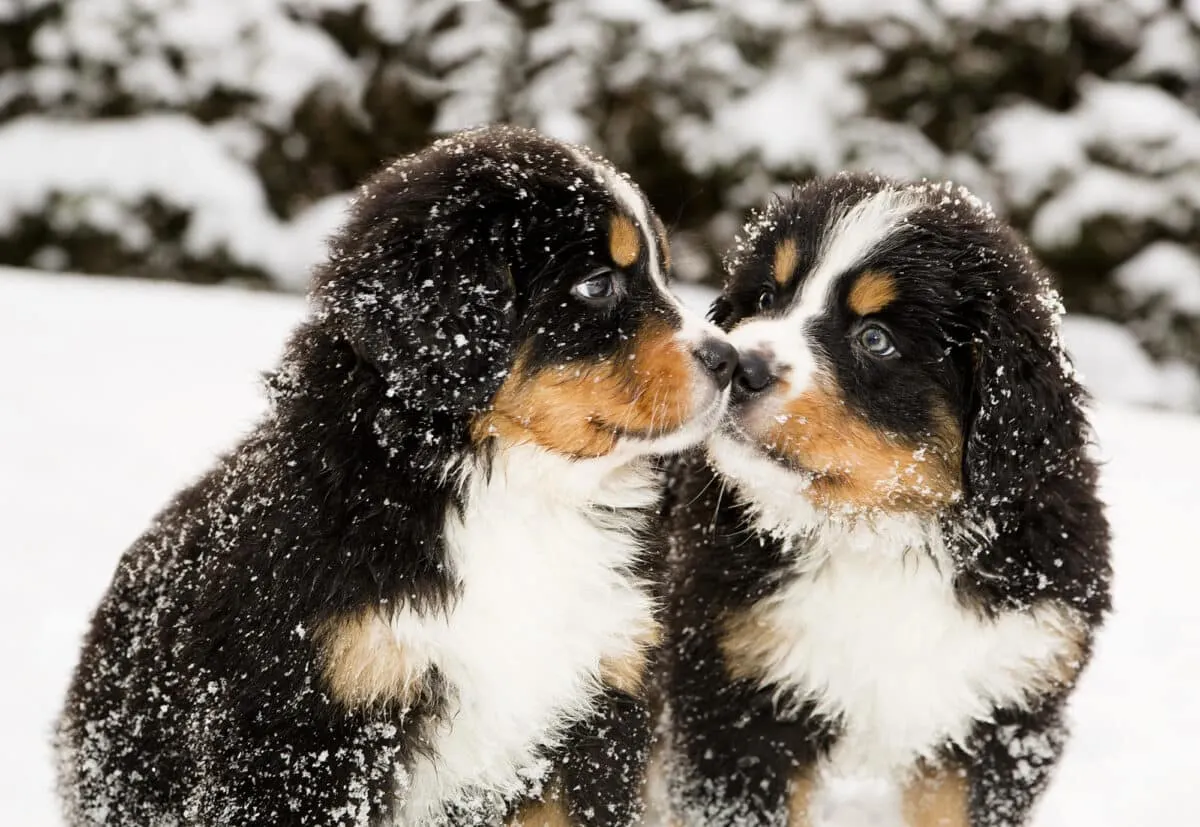Welcome to Bernese Mountain Dogs vs Australian Shepherds.
In this post, we will be looking at two different, although equally adorable, dogs: the Bernese Mountain Dog and the Australian Shepherd.

Extending your family through a dog is a big decision and responsibility, but it will pay back in endless amounts of love and cuddles.
Today there are countless different dog breeds to choose from, and new and unique mixed breeds are constantly appearing. We will zoom in and compare two super-friendly canines – the Bernese Mountain Dog and the Australian Shepherd. Even if you are not pondering a new pet, these outrageously fluffy beings will be a joy to read about.
Both are known for their unique qualities and can be your perfect companion and best friend. Read this article to unearth their distinctive qualities, needs, health issues, and much more.
An Overview
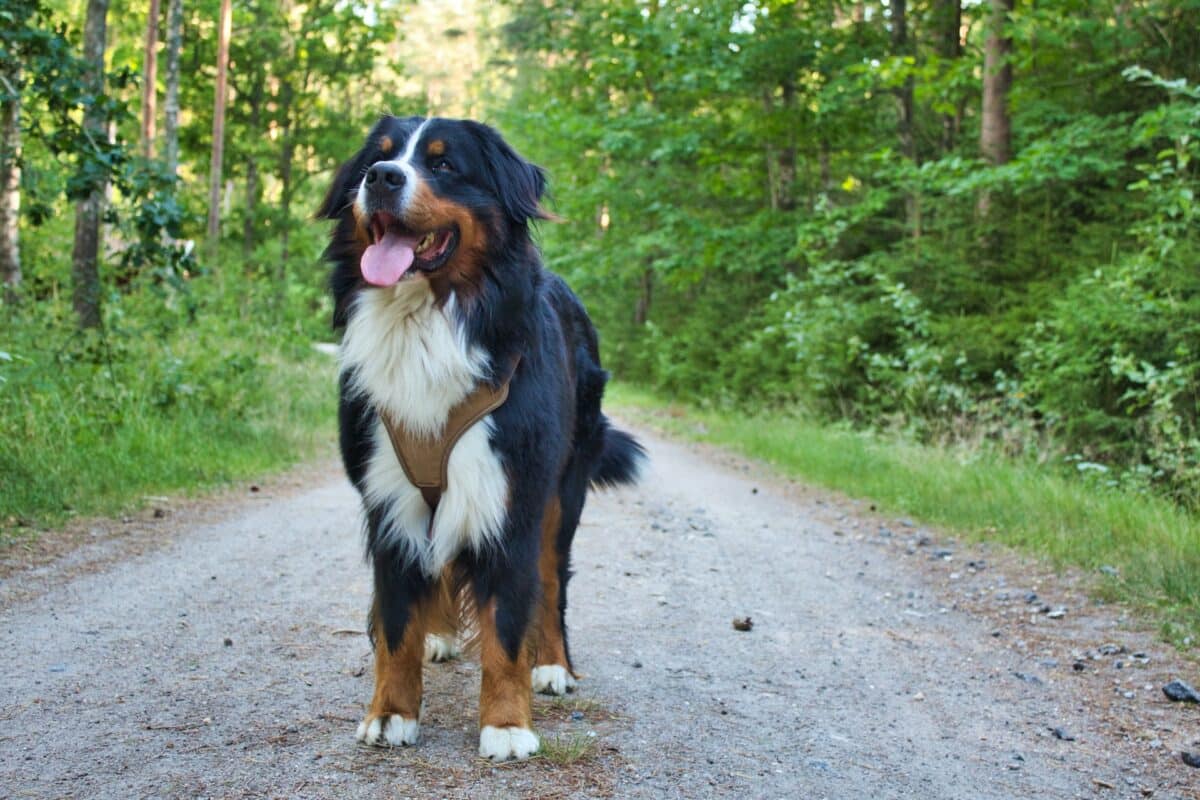
| Characteristics | Bernese Mountain Dog | Australian Shepherd Dog |
| Scientific Name | Canis lupus | Canis lupus |
| Group | Sennenhund | Herd Dog |
| Habitat | Europe | Should be trained from an early age due to their large size |
| Color | Black, White, Tan | Brown, Grey, Red, Black, Tan |
| Weight | 75 to 120 pounds, depending upon their gender | 40 to 60 pounds, (vary depending on size) |
| Height | 23 to 27.5 inches depending upon their gender | 18 to 23 inches (vary depending on size) |
| Temperament | Intelligent, friendly and alert | Loyal, outgoing, energetic, and friendly, |
| Personality | Very loyal, faithful and affectionate | Sweet, faithful and affectionate |
| Diet | Omnivore | Omnivore |
| Training | Should be trained from a early age due to their large size | Easy to train but it takes time |
| Life span | 6 to 8 years | 13-15 years |
| Shedding | Yes | Yes |
Bernese Mountain Dog
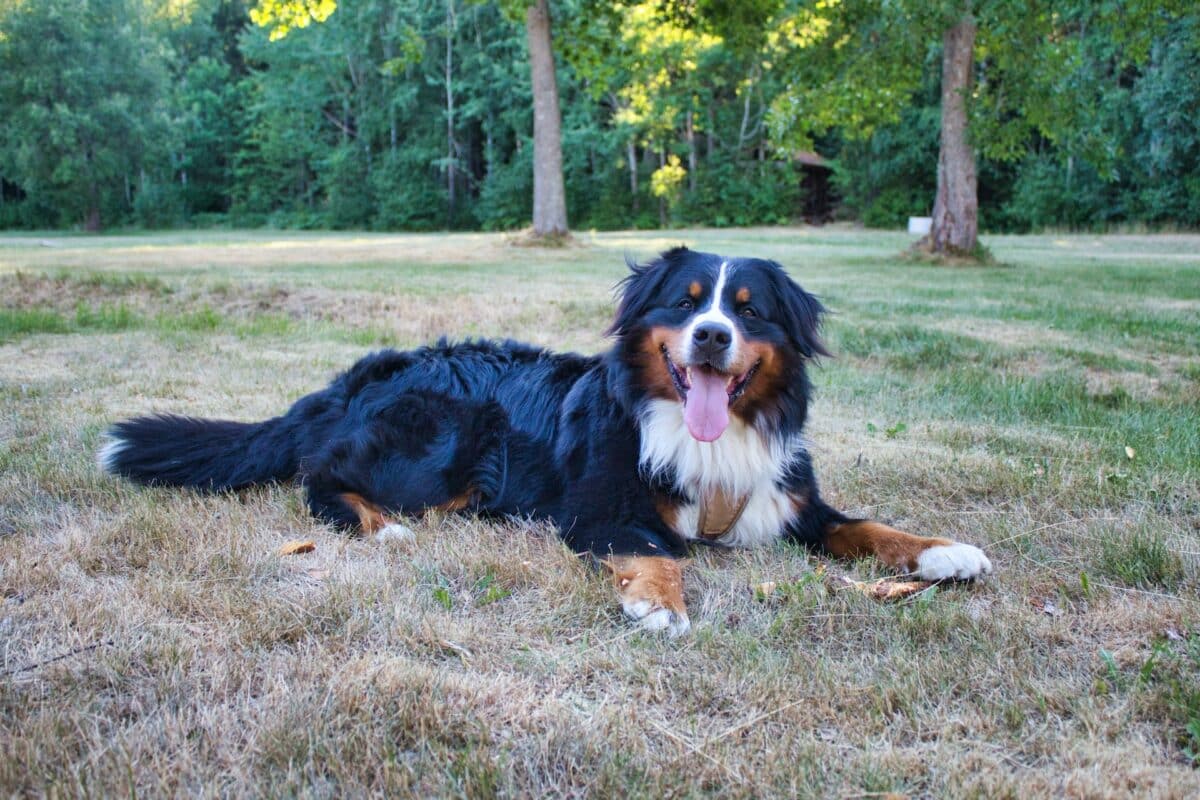
The Bernese mountain dogs are giant-sized dogs that originate from the Swiss Alps. More precisely, this breed of large and sturdy dogs is part of the Sennenhund group of dogs, which also includes the Appenzeller, Entlebucher, and Greater Swiss Mountain Dog. They have been found in Swiss farms for herding cattle and working companions of farm owners for a very long time.
Bernese Mountain Dogs are known for their easy-going and friendly temperament, which is why they are considered friendly dogs who love to play with their owners and other pets. Most importantly, younger children are safe around them as they are gentle despite being giants. Frequently they get particularly attached to a single person who looks after them. In a nutshell, their affectionate and calm nature and loyalty make them ideal family pets.
Another distinctive feature of these beautiful yet sturdy dog breeds is their symmetrical markings, mainly on the face, chest, and legs. The markings are primarily of three colors: white, black, and rust.
Notably, they preferably live in chilly climates that perfectly align with their thick and dense fur, which helps them maintain an optimal body temperature. Their coat is thick, silky, and long, needing regular brushing.
Australian Shepherds
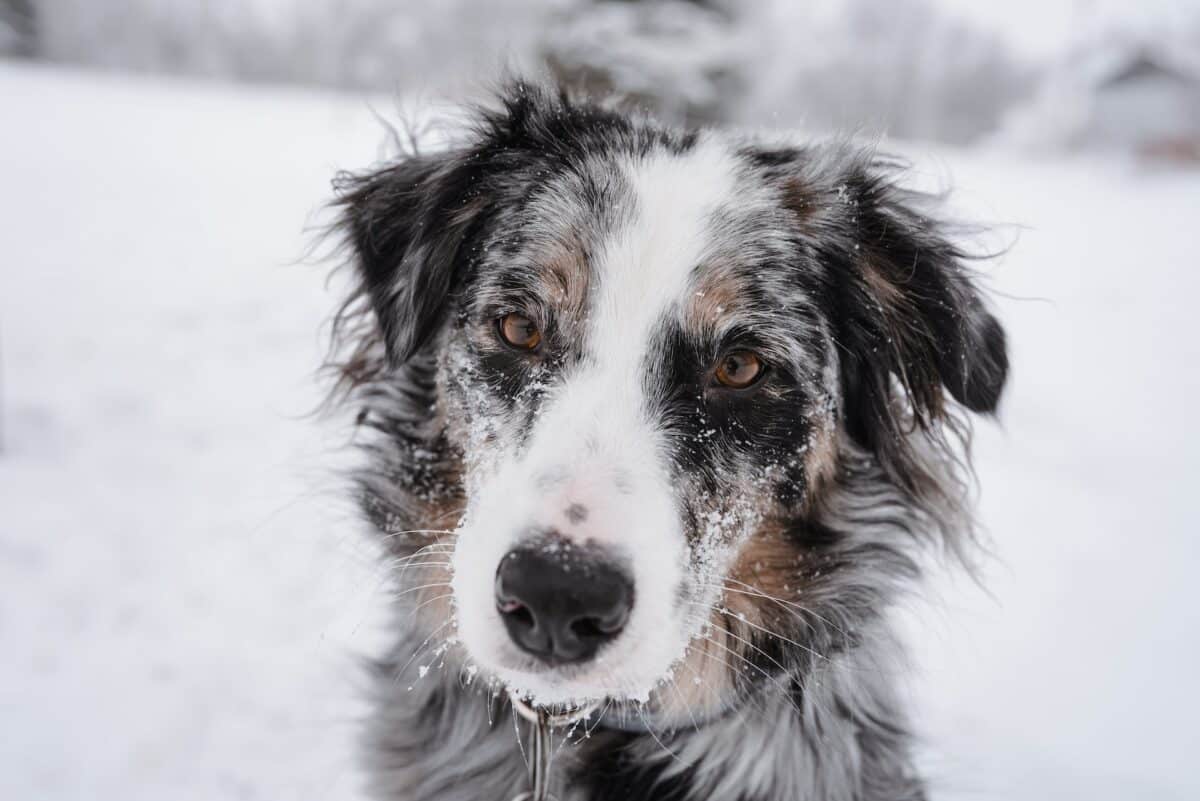
The Australian Shepherd, also known as the Aussie, is a medium-sized herding dog with medium-length hair and an athletic, elegant frame. Despite their name, the breed originated in the Western United States in the 1840s and not in Australia, as one might think.
It is notable that there are several different historical accounts of the Australian Shepherd’s ancestry. One idea holds that Australian Shepherds were bred in the US to work on ranches. Another theory states that their ancestors may have been Spanish herding dogs who were transported to the United States with herds of Merino sheep during the early colonial era.
Yet another speculation contends that the breed has a Collie heritage. The canines are only known as Australian shepherds because they were linked to Basque shepherds who immigrated to America from Australia in the 1800s. Although the breed of Australian Shepherd originated in America, it was eventually brought to Australia.
These shepherd-like dogs are working dogs at heart. In addition, Australian Shepherds are known for their energy, intelligence, and trainability and are often used as working dogs on farms and ranches. The distinctive feature of Aussie is their merle coat that includes a molted pattern of contrasting colors, typically white, rust, and a blue-ish gray.
Moreover, Australian shepherds are excellent companions for families, working dogs for law enforcement, obedience contestants, and assistants in search and rescue operations.
Scientific Classification of Bernese Mountain Dogs and Australian Shepherds
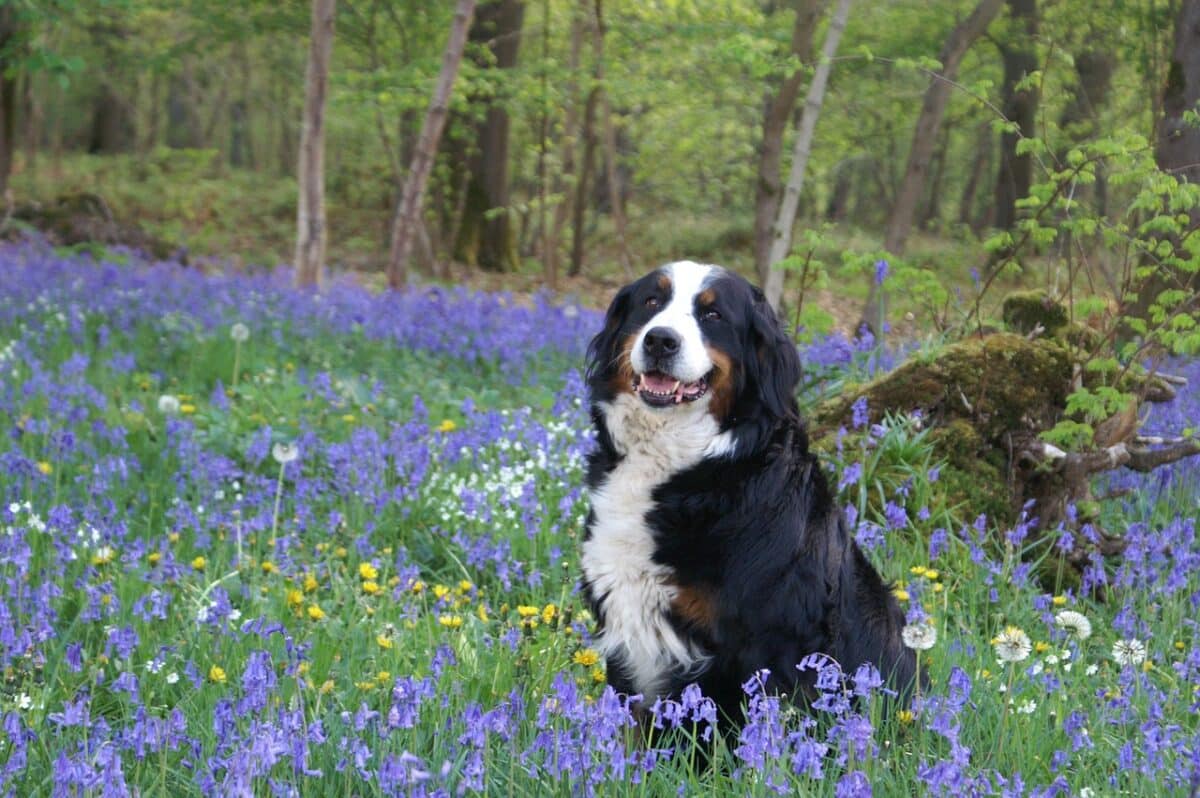
The scientific classification of both dog breeds is the same. Both breeds belong to the Chordata phylum of class Mammalia. However, their origin is different, yet, the family is the same as both belong to the Canidae.
Both belong to the Canis Familiaris species, which all dogs fall into and separates them from wolves and other wild canines.
Nutrition of Bernese Mountain Dogs and Australian Shepherds
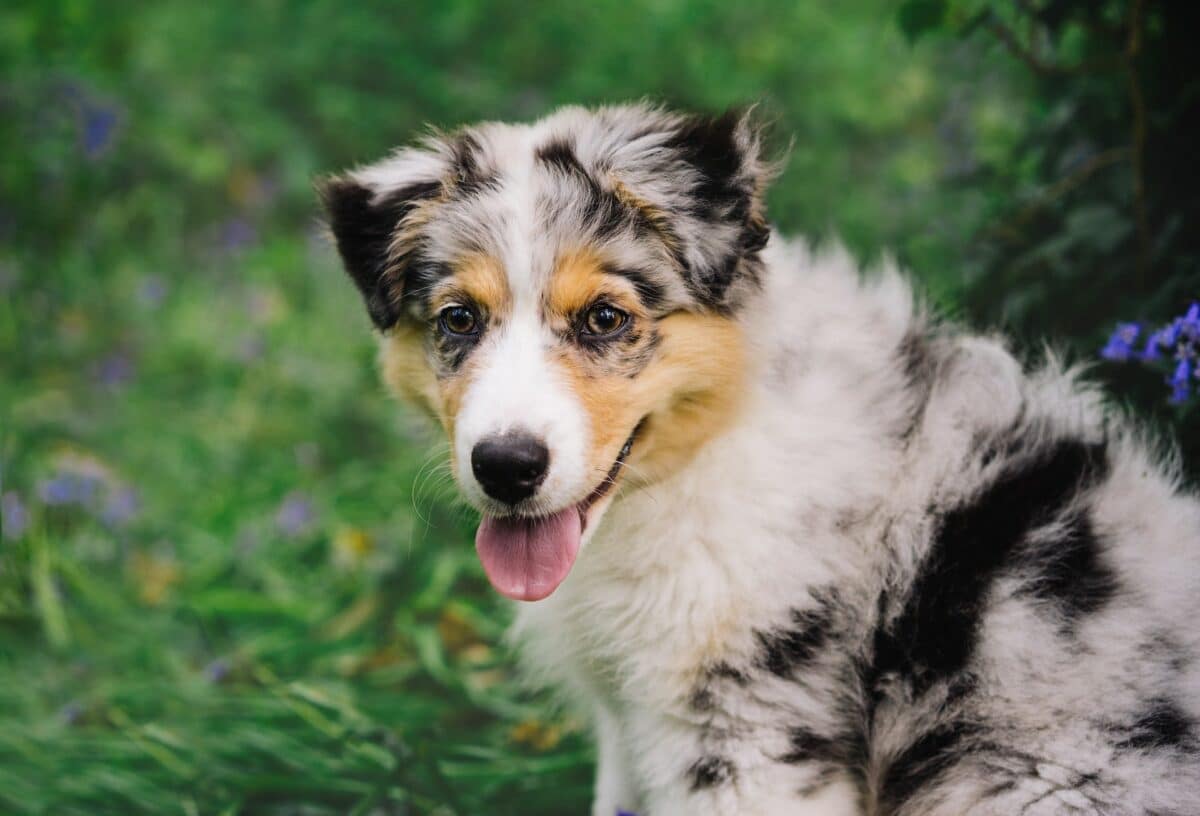
A balanced diet of poultry, beef, fish, lamb and other foods is necessary for Bernese mountain dogs. These are crucial for providing Berneses with the right amount of protein, containing all the amino acids required for protein synthesis. It is noteworthy that feeding nutrient-packed food may increase the life span of Bernese mountain dogs
Likewise, Australian shepherds also need nutritionally balanced food for a healthy and long life. The amount will vary according to the size, degree of exercise, age, and other characteristics of the dog. Additionally, make sure your Aussie has access to fresh water at all times, particularly during hot weather and periods of vigorous exercise.
In a nutshell, it is ideal to consult your veterinarian about your dog’s nutritional requirements and obtain the prescribed advice.
Temperament of Bernese Mountain Dogs and Australian Shepherds

Bernese mountain dogs are family-friendly pets and are well-known for their friendly and playful nature with children, other pets, and even strangers and younger children. In addition, their loyalty and affectionate nature can melt anyone’s heart. Moreover, they tend to be relatively low-energy when indoors and enjoy snuggling with their owners.
On the other hand, Australian Shepherds are known for their high energy and intelligence, as they were bred as herding dogs. In addition, they are incredibly resilient, affectionate, brave, and active dogs who need proper exercise to utilize their energy properly. Otherwise, it may result in aggressive behavior.
Also, if they do not exercise daily, they are more likely to develop physical issues, as discussed in this article’s lateral part. In short, Australian Shepherds are highly active and require regular exercise to keep them mentally and physically stimulated.
The species are highly trainable and excel in obedience, agility, and other dog sports. Besides, Aussies generally have a protective nature and are cautious and slightly reserved with new people. Overall, though, Aussies are versatile dogs that can adapt to different environments and roles.
Training of Bernese Mountain Dogs and Australian Shepherds
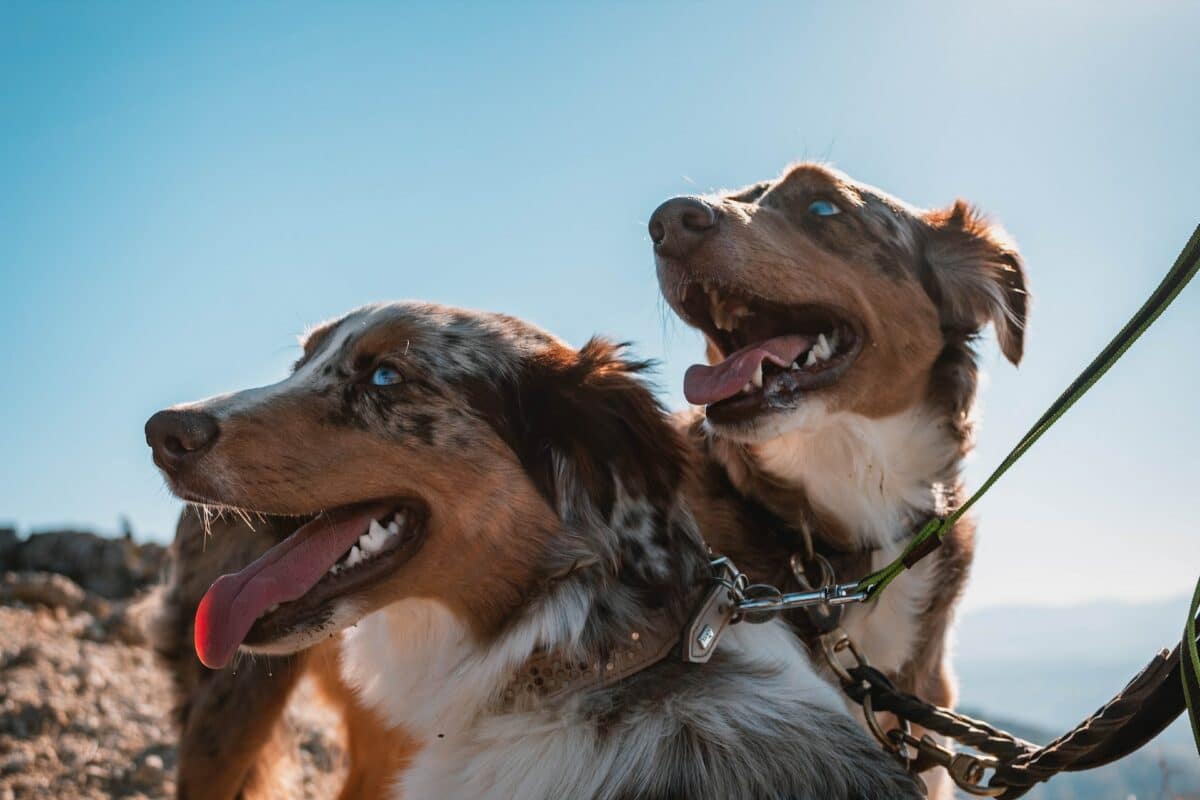
Bernese mountain dogs are intelligent and obedient, making them easy to train. They have a strong desire to please and get enough appreciation from their owners, contributing to their easy trainability.
However, it is best to start their training when they are still puppies. Teach them the fundamentals of obedience and socialization, such as sitting, staying, and lying down on command. A giant breed like a Berner must start their basic training from an early age because a grown-up Bernese may become intense and challenging to handle if they haven’t picked up manners yet.
Moreover, to increase your dog’s comfort and confidence, try exposing it to various people, animals, and circumstances. In short, training a Bernese puppy is comparatively easier than training a grown-up Bernese – as with all types of dogs.
Australian Shepherds are often open to instruction and pick things up fast. You can easily train grown-up Aussies as well. In addition, they are known to have a friendly and obedient nature.
Moreover, positive reinforcements can further make training effective and more result-oriented. Positive reinforcements for Australian Shepherds may include giving them small treats, praise, and play to reinforce desired behaviors.
Also, it is important to know that consistency and patience are fundamental factors in training Australian Shepherds as they need a lot of repetition and positive reinforcement to learn new commands. Besides, socialization can also help in improving their response to the training.
Please note that socialization includes exposing them to different people, animals, and situations while they are still young. Lastly, Australian Shepherds have a strong herding instinct. Therefore, they should be trained to channel this instinct positively. Otherwise, it may result in various destructive behaviors.
Health Problems
Let’s take a look at the common health problems of Bernese mountain dogs and Australian Shepherds so that you can take preventative measures.
Health Problems of Bernese Mountain Dogs

#1 Neoplasia
Common symptoms of neoplasia may include loss of appetite, unnecessary weight loss, lethargic or sluggish behavior, development of lesions or bumps on the skin, etc. It is advised to take Bernese for regular examinations.
#2 Canine Hip Dysplasia (CHD)
Hip dysplasia is where the femur’s head meets improperly with the hip socket.
Canine hip dysplasia (CHD), as well as other illnesses, should be screened in breeding stock by conscientious breeders because the painful condition is inherited.
Common symptoms of hip dysplasia may include decreased activity, thinning thigh muscles, joint grating, stiffness or limping, weak or collapsing hind legs, and lameness in the hind legs.
#3 Elbow Dysplasia
In elbow dysplasia, the elbow joint grows incorrectly, causing pain, limping, and lameness. This condition is similar to hip dysplasia. Additionally, it may lead to arthritis. Elbow dysplasia can oftentimes be cured through surgery.
#4 Gastric Torsion Bloat
Any breed of dog can develop gastric torsion, a dangerous and sometimes fatal ailment, although larger dogs are, in general, more prone to it.
The most obvious symptoms of bloating are excessive drooling, a bloated or dilated abdomen, difficulty in breathing, weakness, lack of appetite, restlessness, and retching (but only expelling frothy saliva.)
#5 Renal Failure and Kidney Diseases
Kidney problems in Bernese Mountain Dogs are the main reason for their shorter life span. Studies indicate that they are more prone to renal diseases than other breeds.
Early detection of canine renal illness is crucial so your veterinarian can assist you in getting your dog the best care possible. Common symptoms of kidney issues are excessive thirst, excessive urination, blood in urine, loss of interest in playing, weight loss, vomiting, bad breath, and mouth ulcers.
Health Problems of Australian Shepherds
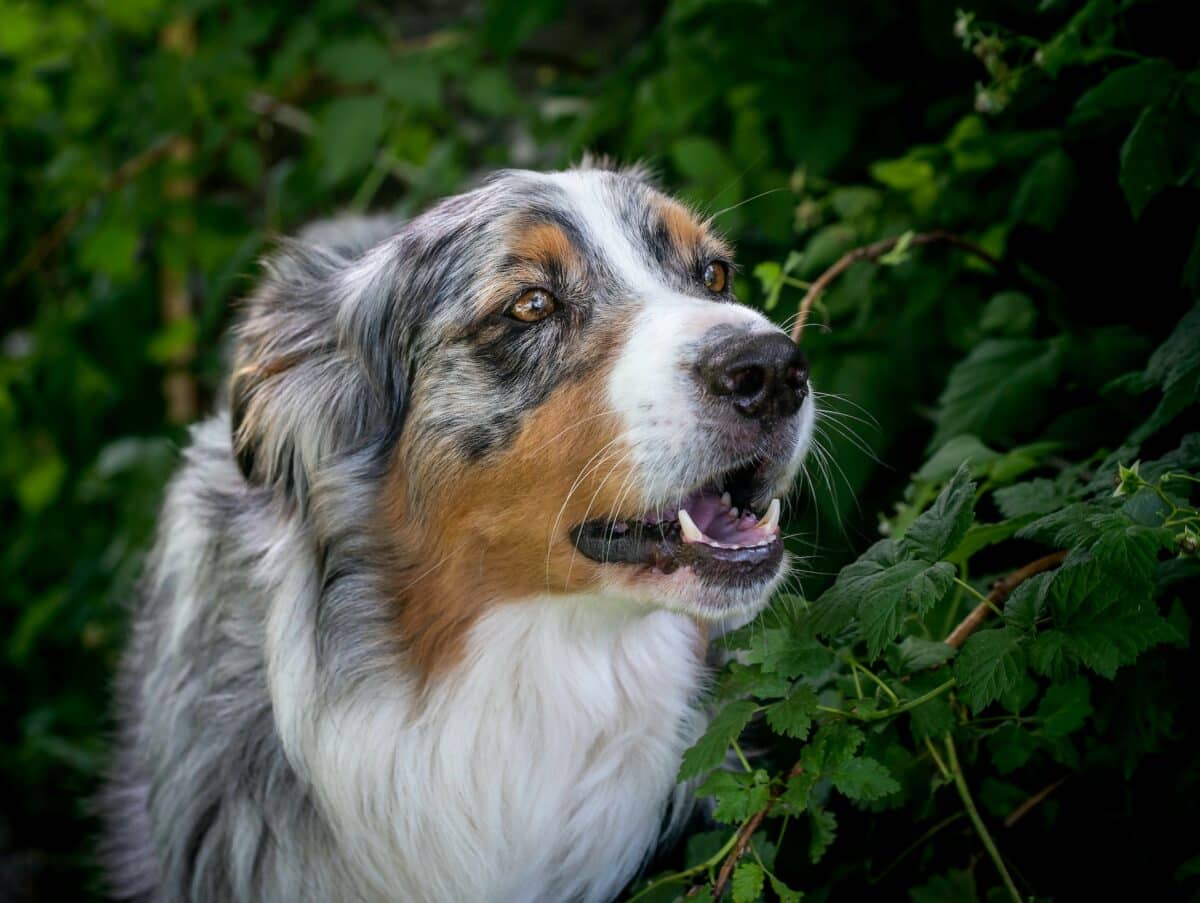
It is noteworthy that Australian Shepherds are a generally healthy dog breed, still, they are sensitive to a few illnesses, such as:
#1 Hip Dysplasia
It is a genetic condition that affects the hip joint, causing pain and arthritis in affected dogs. Since it is a genetic problem, thus, it is crucial to choose a reputable breeder who health tests their breeding dogs for genetic issues.
Besides, it may also develop later in a dog’s life due to several contributing factors. Some of these are excessive weight gain and lack of exercise. The common symptoms of hip dysplasia are laziness, thinning thigh muscles, joint grating, weak or collapsing hind legs, and lameness in the hind legs.
#2 Progressive Retinal Atrophy (PRA)
These are eye problems that older Aussies are prone to. Notably, some Australian shepherds have the potential to inherit this eye disorder. It is a blinding eye condition that worsens over time.
However, age is not always a factor in the disease. Your dog may require an eye exam if their pupils seem dilated, they act disoriented, or they are reluctant to explore new areas.
#3 Epilepsy
It is a neurological disorder characterized by recurring seizures that can be caused by a variety of factors, including genetic predisposition, trauma, infection, and certain metabolic disorders.
Treatment for epilepsy in dogs typically involves the use of anti-seizure medication, which can help control the frequency and severity of seizures.
#4 Degenerative Myelopathy (DM)
It is a progressive neurological disorder that affects the spinal cord in Aussies. They are one of the dog breeds that have been identified as having a higher risk of developing Degenerative Myelopathy.
This health issue typically begins with a loss of coordination in the hind limbs. It progresses to the point where the dog is unable to stand or walk. Unfortunately, the disease has no considerable treatment. However, certain physical activities may help in lessening its effects.
#5 Skin Conditions
Some common signs of allergic skin conditions are itching, redness, and inflammation of the skin, as well as excessive shedding and rashes. Please note that these conditions can be caused by a variety of factors, including food, flea bites, and environmental allergens such as pollen or dust mites.
#6 Bloat (gastric torsion)
Bloating, also known as gastric torsion, is a serious condition in which the stomach fills with gas or air and twists on itself, cutting off blood flow and trapping the gas inside. Symptoms of bloating in dogs include a swollen or distended abdomen, restlessness, retching, and attempts to vomit without producing anything.
If you suspect your Australian Shepherd has bloat, it is crucial to seek experts’ advice as soon as possible as it can be a life-threatening health problem.
Grooming of Bernese Mountain Dogs and Australian Shepherds
Bernese mountain dogs have a thick, double coat that is medium in length and sheds a lot, so you need to put extra effort into keeping their fur well-managed by removing extra fur.
Their grooming includes regular brushing to prevent tangles which may increase shedding. More specifically, their thick layers of coat need brushing twice a week and trimming once every two weeks. Additionally, a weekly inspection of your dog’s ears is a must as it determines whether they need professional cleaning or not.
Ear infections are slightly common in Bernese Mountain Dogs as they have more floppy ears than other dogs. Notably, it is also essential to periodically trim their nails for healthy and pleasant paws and brush their teeth to prevent bad breath.
The grooming practices for Australian Shepherds are not different from the practices that we mentioned for Bernese.
Exercise Requirements
Bernese Mountain Dogs require a daily workout that includes mental and physical stimulation to channel their energy and keep them healthy.
Australian Shepherds are a bit more high-maintenance when it comes to exercise. This clever and energetic dog breed may easily become bored, irritable, and hyperactive if its stimuli are insufficient. According to experts, they need at least one to two hours per day of moderately demanding exercise, such as jogging, playing fetch, or agility training. Toy puzzles are also great activities to keep their minds active.
Summary
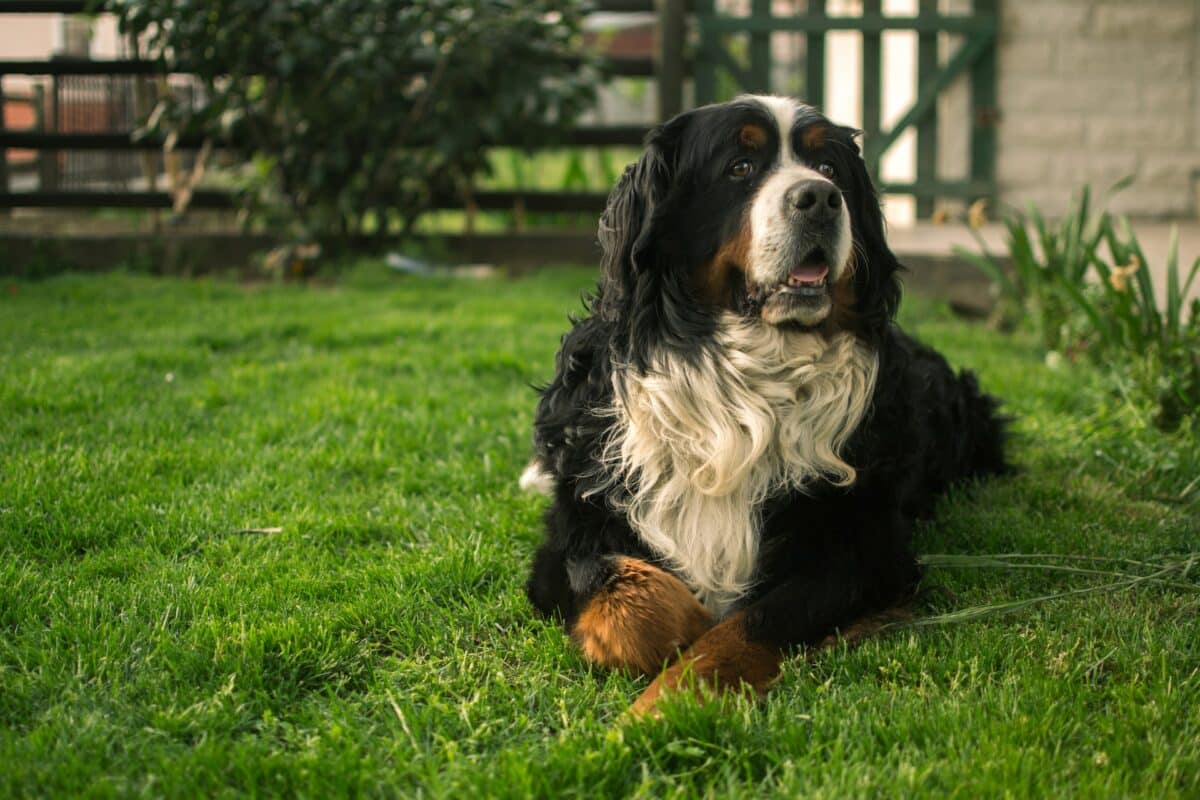
| Key Points |
| Bernese Mountain Dogs and Australian Shepherds are great options to consider if you are looking for family-friendly dogs. |
| Bernese Mountain is safer for younger children, yet, Aussies are also not a danger for them. |
| Aussies are slightly easier to train but need continuous training and mental stimulation, or they will become destructive. |
| The major health issues may cause your Bernese mountain dog’s or Australian Shepherd’s safety. |
Wrapping Up on Bernese Mountain Dogs vs Australian Shepherds
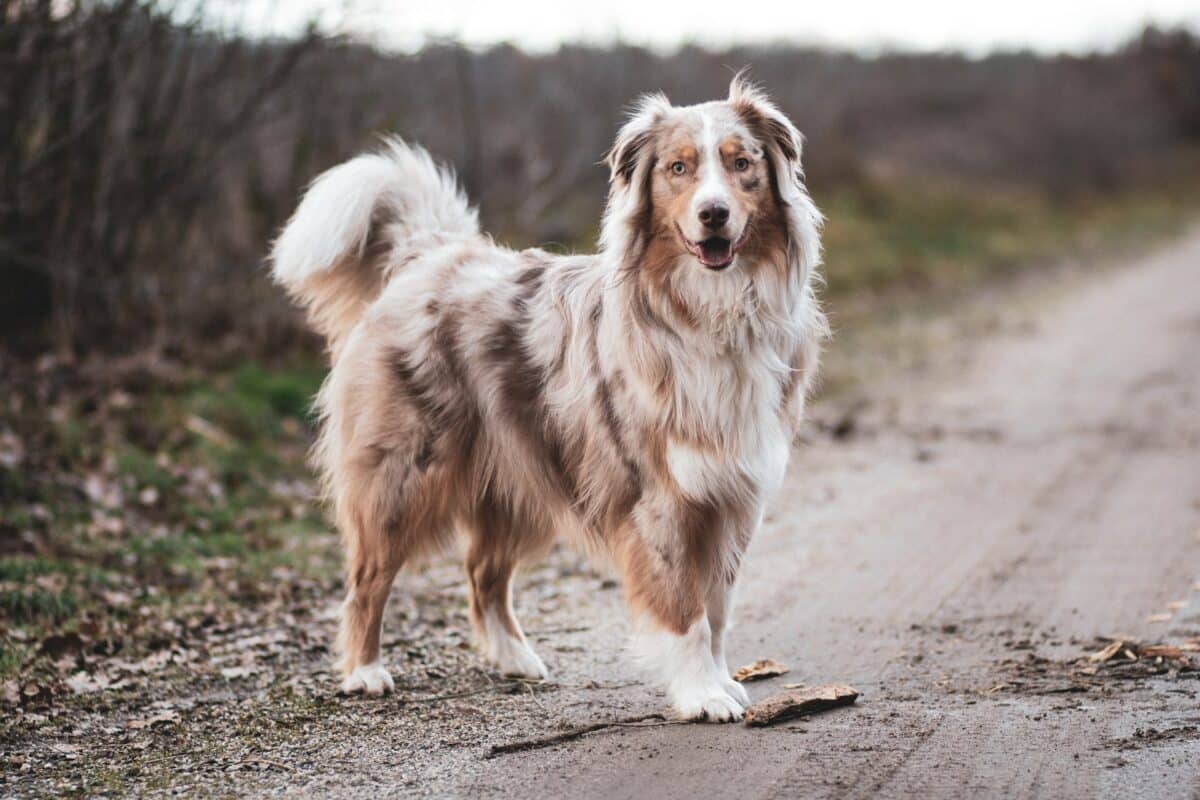
To conclude, Bernese Mountain and Australian Shepherd dogs are great options to consider if you are looking for family-friendly dogs. Due to their easy trainability and friendly nature, both become great companions.
However, if you are looking for a more jubilant and playful dog, consider keeping Australian Shepherds as dogs. Whereas if you have younger kids at home, you should go for a Bernese mountain dog.
Thank you for reading this article about the Bernese Mountain Dog and Australian Shepherd! There are countless adorable dogs yet to be discovered though, take a look at our pots on the Chiweenie or the Toy Poodle!
- Chicago Cat Jumps From 5th Floor of Burning Building and Survives - April 22, 2024
- The Cruelest Contest in the World: Rattlesnake Round-Ups - April 21, 2024
- Rare Footage: Wild Fox and Pet Cat Play-Date - April 21, 2024

